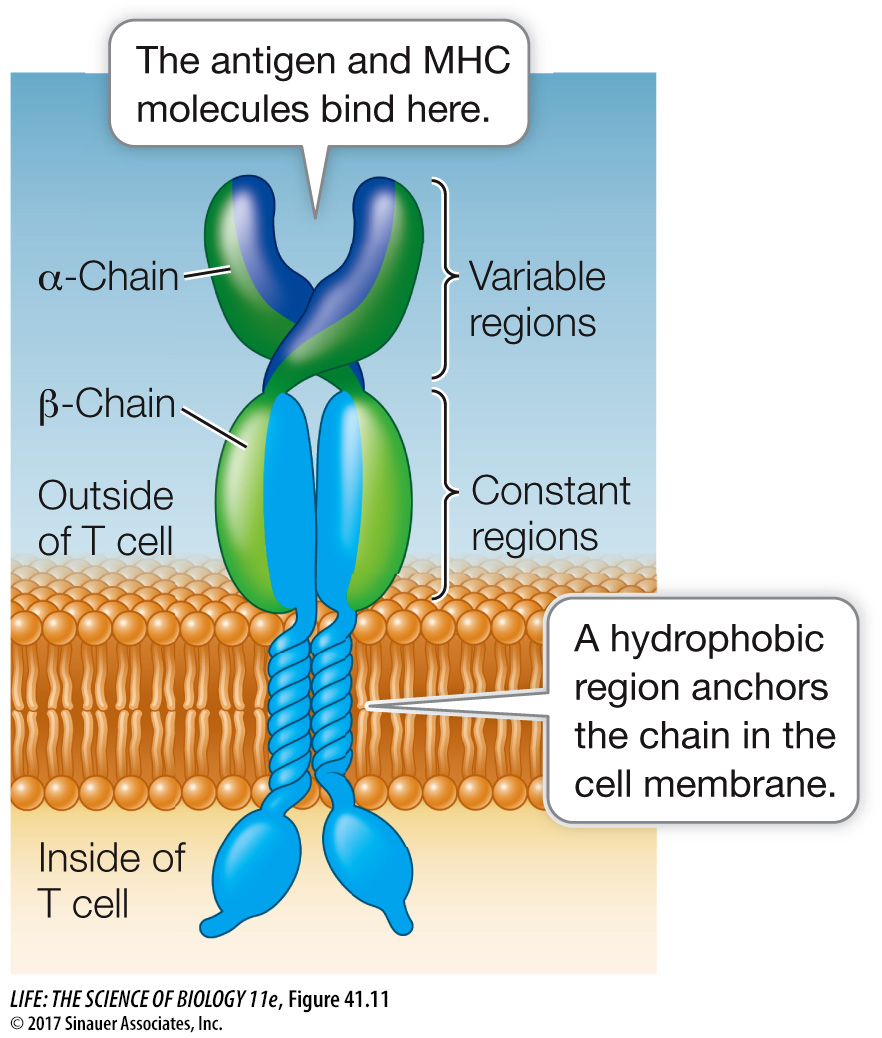key concept 41.5 The Cellular Adaptive Response Involves T Cells and Receptors
Two types of effector T cells (T-
focus your learning
In the effector phase of the humoral response, T-
helper (TH) cells activate previously unexposed B cells with the same specificity to produce antibodies. Regulatory T cells (Tregs), which recognize self antigens, help ensure that the immune system does not attack self cells and molecules indiscriminately.
Two classes of effector T cells (cytotoxic T cells and T-
helper cells) are involved in the cellular adaptive response. Diversity in MHC molecules is very high in humans.
Like B cells, T cells possess specific membrane receptors. The T cell receptor is not an immunoglobulin, but a glycoprotein with a molecular weight of about half that of an IgG. It is made up of two polypeptide chains, each encoded by a separate gene (Figure 41.11). The two chains have distinct regions with constant and variable amino acid sequences. As in the immunoglobulins, the variable regions provide the site for specific binding to antigens. But there is one major difference: whereas an antibody can bind to an antigen whether it is present on the surface of a cell or not, a T cell receptor binds only to an antigen displayed by an MHC protein on the surface of an antigen-

Animation 41.4 Cellular Immune Response
www.life11e.com/
When a T cell is activated by contact with a specific antigen, it proliferates and forms a clone. Its descendants form clones of two types of effector T cells:
Cytotoxic T cells, or TC cells, recognize virus-
infected or mutated cells and kill them by inducing lysis. T-
helper cells (TH cells, also called helper T cells) assist both the cellular and the humoral immune responses.